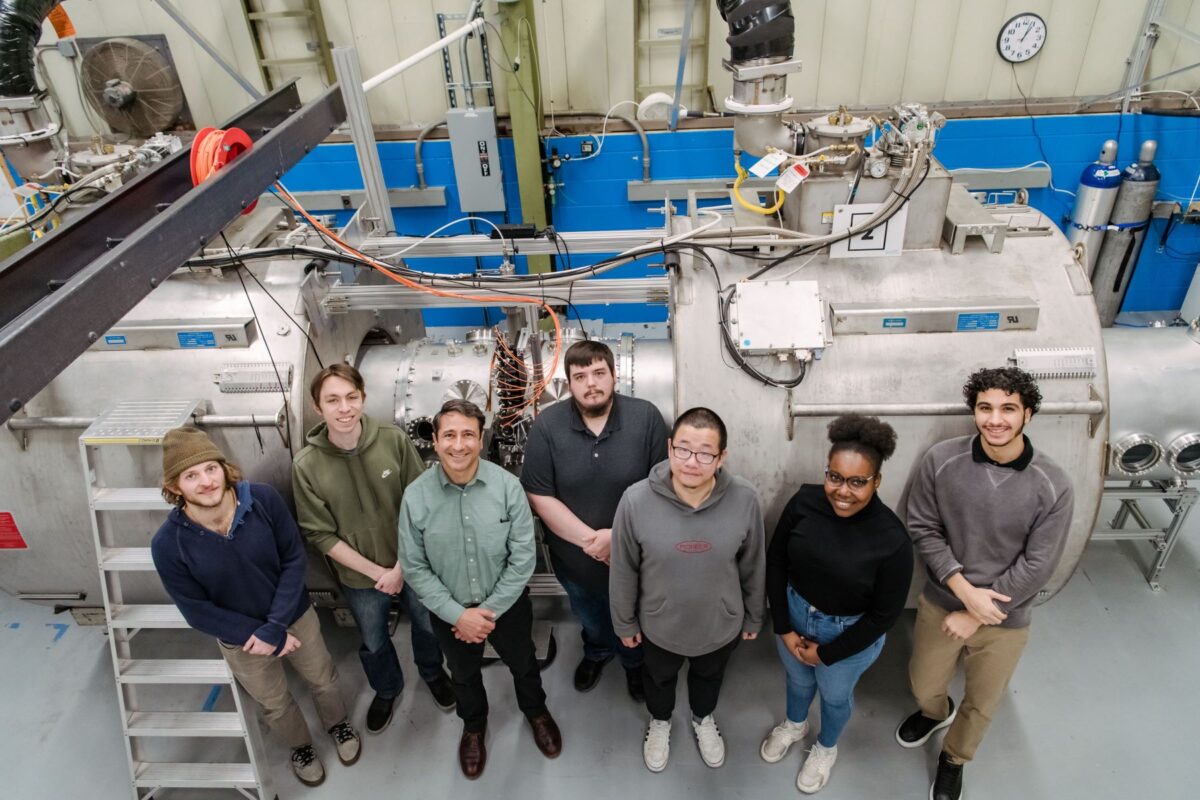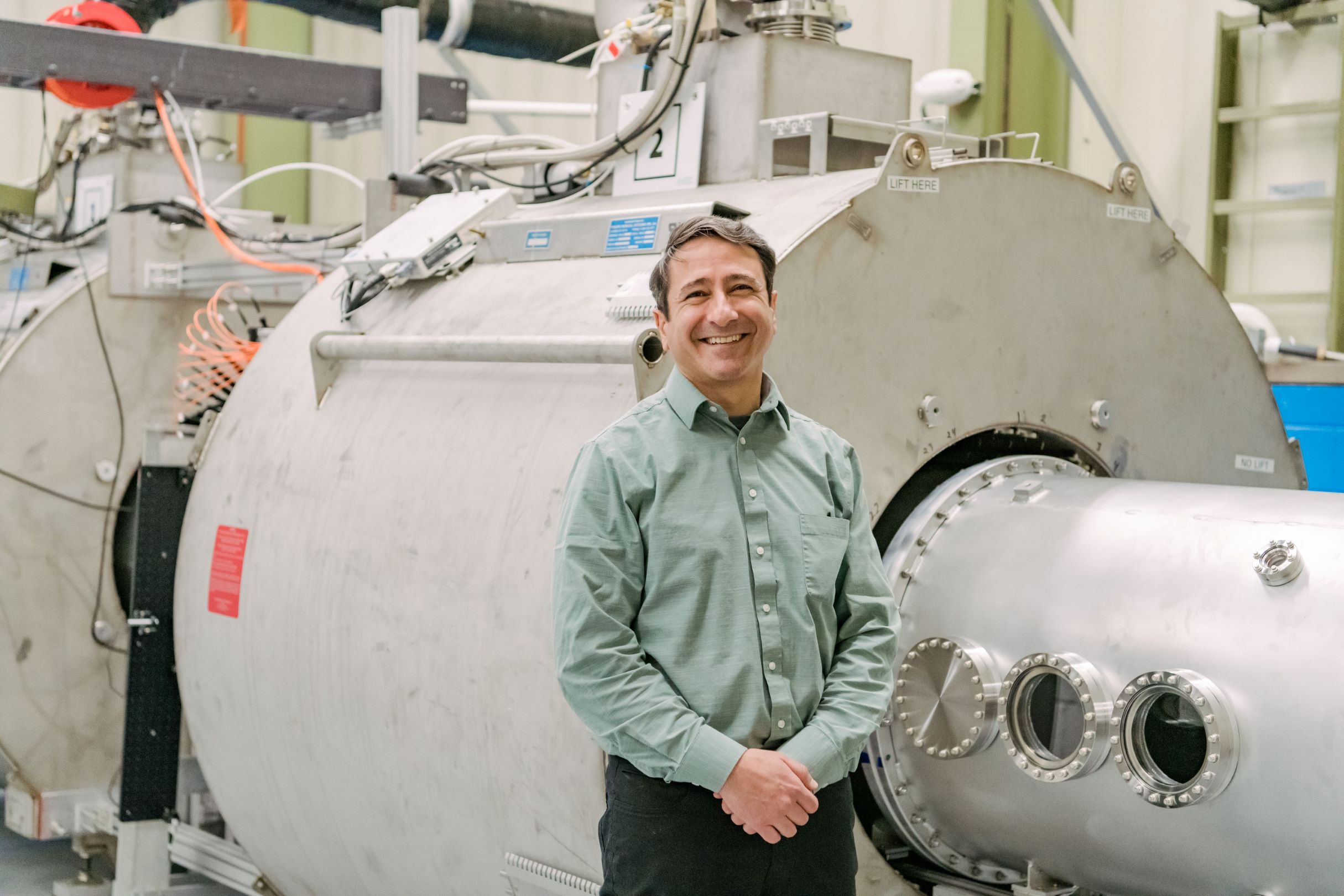On a recent Tuesday in December, UMBC’s Carlos Romero-Talamás escorted a TV crew from Baltimore into one of his labs. The reporters were there to talk about a just announced fusion power milestone achieved at Lawrence Livermore National Laboratory in California, but they quickly became interested in Romero-Talamás’s own experiments too. He is questing after the same fusion milestone using equipment that’s much simpler and cheaper.
Bringing the energy of the stars to Earth
Fusion is the atomic engine that powers stars. Inside the cores of these celestial infernos, fast-moving hydrogen atoms, stripped of their electrons, ricochet around. Occasionally they collide in such ways that they transform into helium atoms. When that happens, a lot of energy is released.
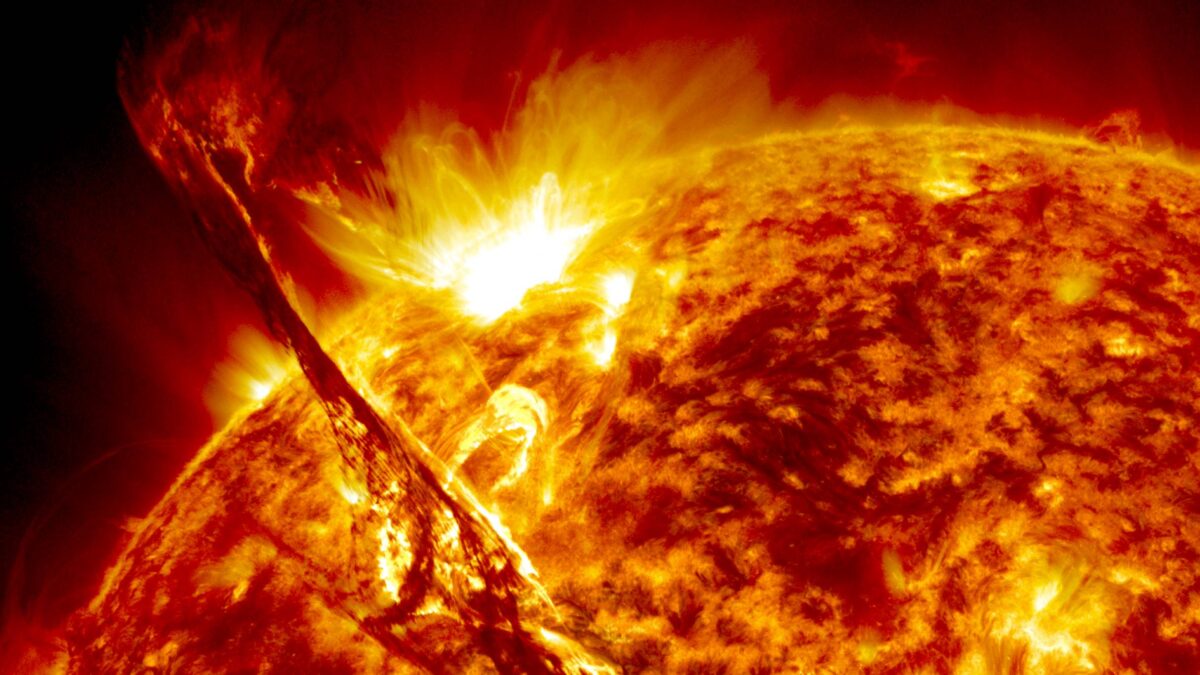
For decades, humanity has dreamed of harnessing fusion power on Earth to make safe, clean, and near limitless energy. But thorny physics and engineering challenges made the goal elusive, with scientists coming to joke that “fusion power is 30 years away—and always will be.”
Yet now, a growing excitement is displacing some of the skepticism. Governments are directing more money toward fusion research and private investors such as Bill Gates and Jeff Bezos are collectively pitching in billions of dollars. Some companies are promising commercial fusion power in 10 years.
Romero-Talamás’s own work has benefited from the renewed attention. In 2020, he was awarded a $4 million grant from the U.S. Department of Energy to explore a promising alternative to traditional fusion power approaches. Rather than blast hydrogen atoms with lasers (the approach used at Lawrence Livermore) or squeeze them into a donut-shaped ring using enormous magnets (the approach epitomized by the multi-billion-dollar, nearly 100-foot-tall ITER fusion reactor under construction in France), Romero-Talamás and his team plan to confine their hydrogen atoms in a supersonic whirlwind shaped by a novel arrangement of magnets and an electrically conducting central rod.
If the concept works, it could lead to a commercial fusion reactor relatively quickly, Romero-Talamás says, because it uses equipment that is smaller, cheaper, and simpler to operate than the equipment required by other approaches.
A simpler fusion reactor
Romero-Talamás’ team, which includes collaborators from the University of Maryland, College Park, has already built a test machine in a lab on the College Park campus. While the machine does not have the capacity to operate as an energy-generating reactor, initial experiments on it show the hydrogen atoms are being trapped in the whirlwind as hoped. If experiments continue to go well, the team will soon begin work on a bigger, next-generation machine. That machine could be fitted to produce more power than it takes to run, a key milestone on the road to commercial fusion power.
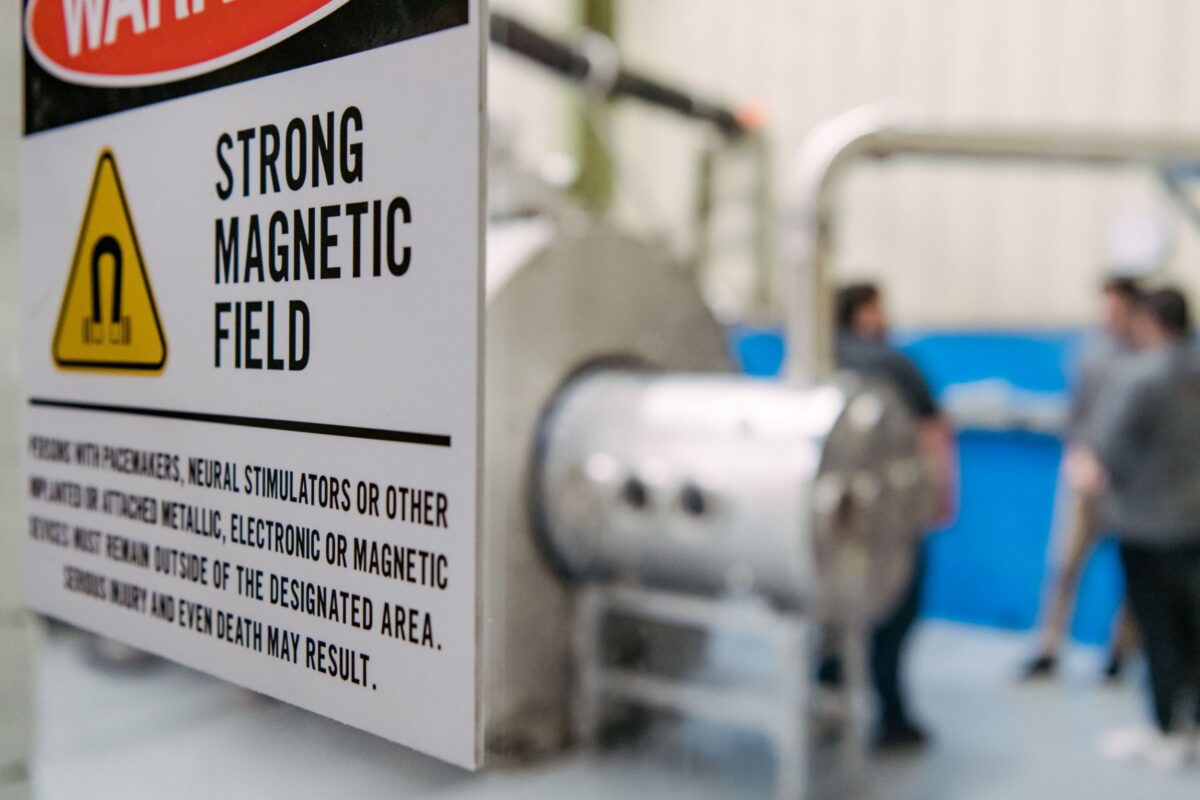
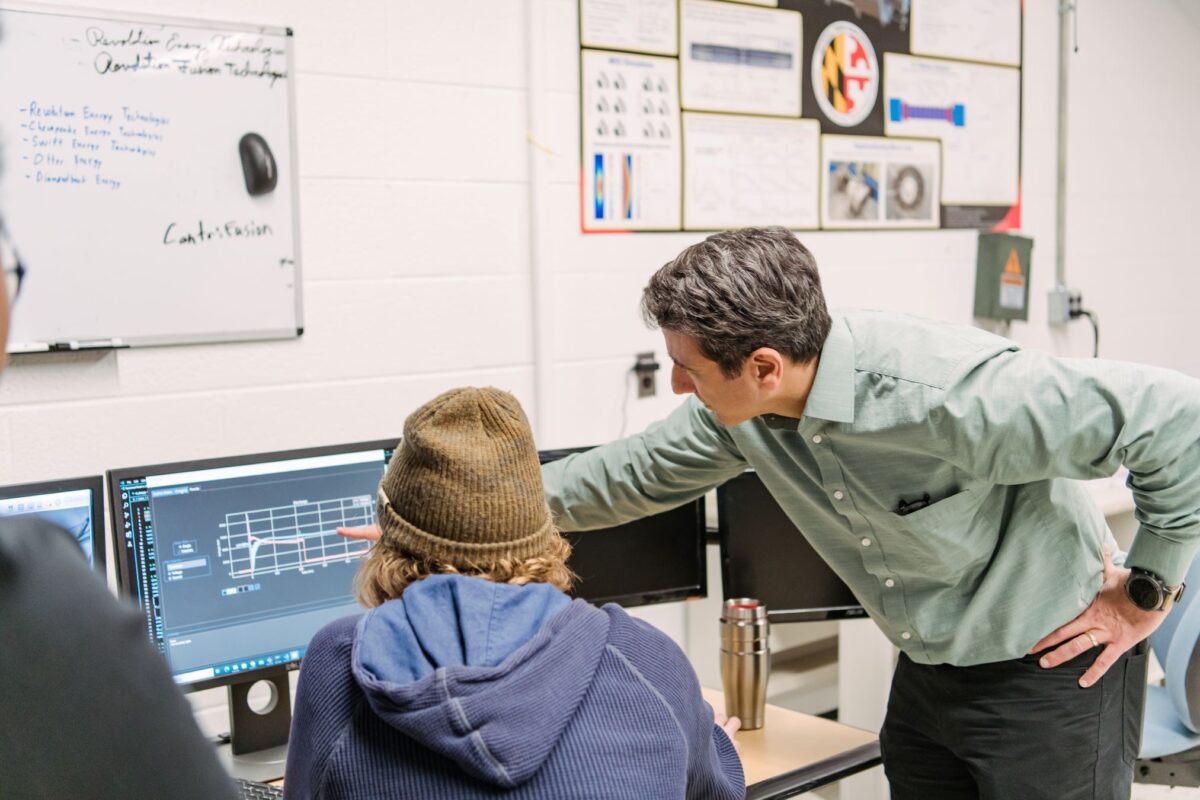
We sat down to chat with Romero-Talamás about the wonder of fusion and the excitement of scientists who feel they may be on the cusp of world-changing innovations. The following interview has been edited for brevity.
Conversation with Carlos Romero-Talamás
UMBC News: It feels like fusion is having a moment. Do you agree?
Romero-Talamás: The announcement from Lawrence Livermore gained a lot of attention, but fusion has actually been having a moment, so to speak, for the last few years. And the reason these years have been different is because the private sector got interested. The amount of money they bring is changing the equation. I’ve told people our concept will take tens of millions of dollars for the next machine—which is not a reactor, but a reactor-sized experiment—and they don’t even flinch. They are people who are used to handling that kind of money.
UMBC News: What are some of the challenges that remain?
Romero-Talamás: There are still big questions. Some are about the physics—how the particles behave. Some are engineering—how are you actually going to build something that can operate day in and day out. We also need people, not just graduate students, but also technicians who know the technology.
Some of these fusion companies and concepts are probably going to fail. And hopefully, that won’t spook the investors, because the success of one will be beneficial to everyone.
UMBC News: How did you get interested in fusion?
Romero-Talamás: When I was an undergraduate, there was a fusion experiment where for a brief amount of time they produced about 60% of the energy they put in. I had never heard of fusion until then—that’s when I learned about it. I thought, “Okay, by the time I’m a scientist, they are going to have fusion reactors.” Of course, that didn’t happen.
But in graduate school, I learned about fusion energy more from the fundamental physics side, and I thought it was fascinating. I actually got funding as a student to go to Lawrence Livermore, and I did a lot of my research there.
UMBC News: What excites you about this research?
Romero-Talamás: We all need energy, and many metrics even measure a country’s economic strength by the amount of energy it produces and consumes. Fusion is considered the “holy grail” of energy. It could provide virtually unlimited energy for millions of years. It is clean and carbon free. I think finally it is getting the attention it deserves.
And, of course, the students are the heart of the work. They believe they can change the world.
